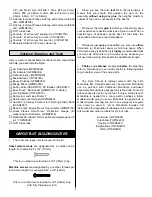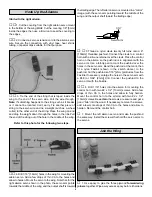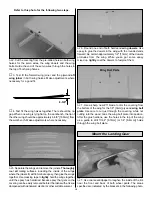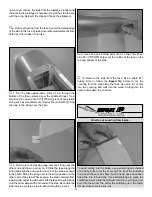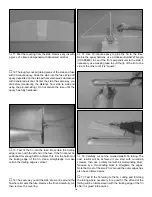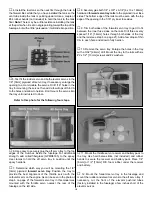
INTRODUCTION ................................................................2
IMAA...................................................................................2
Scale competition ...............................................................3
SAFETY PRECAUTIONS ..................................................3
DECISIONS YOU MUST MAKE ........................................4
Radio Equipment................................................................4
Engine Recommendations .................................................4
Spinner Adapter Kit ............................................................4
ADDITIONAL ITEMS REQUIRED .....................................4
Hardware and Accessories ................................................4
Adhesives and Building Supplies .......................................4
Optional Supplies and Tools...............................................5
IMPORTANT BUILDING NOTES.......................................5
KIT CONTENTS.................................................................6
ORDERING REPLACEMENT PARTS...............................7
TIGHTEN THE COVERING................................................8
ASSEMBLE THE WING .....................................................8
Hinge the Ailerons ..............................................................8
Hook Up the Ailerons .........................................................9
Join the Wing......................................................................9
Mount the Landing Gear ..................................................10
ASSEMBLE THE FUSELAGE .........................................12
Mount the Stabilizer and Fin ............................................12
Mount the Servos .............................................................15
Hook Up the Rudder ........................................................17
Hook Up the Elevators .....................................................18
Mount the Tailgear ............................................................20
Mount the Engine .............................................................21
Mount the Cowl ................................................................22
Finish the Radio Installation .............................................24
SCALE DETAILS .............................................................24
Mount the Wing Struts......................................................24
Finish the Cockpits ...........................................................25
Apply the Decals ..............................................................27
PREPARE THE MODEL FOR FLYING............................27
Set the Control Throws.....................................................27
Balance the Model Laterally.............................................28
Balance the Model (C.G.).................................................28
Identify Your Model ...........................................................29
Charge the Batteries ........................................................29
Balance Propellers ...........................................................29
CHECKLIST .....................................................................29
FINAL PREPARATIONS ..................................................30
Ground Check ..................................................................30
Range Check....................................................................30
ENGINE SAFETY PRECAUTIONS .................................30
AMA SAFETY CODE ......................................................30
General.............................................................................30
Radio Control ...................................................................31
FLYING.............................................................................31
Takeoff ..............................................................................31
Flight.................................................................................31
Landing ..............................................................Back Cover
Windscreen Template .....................................Back Cover
Congratulations and thank you for purchasing the Great
Planes Ryan STA-M ARF. We at Great Planes R&D were
pleased with the appearance and performance of the
original red, white and black civilian Ryan STA and are just
as pleased with this military “M” version. In fact, a couple of
minor improvements make this plane our best ARF yet.
Although not intended to be an all-out scale model, the
Ryan's classic design and two-cockpit layout make it
tempting for enthusiastic modelers to spend a few extra
hours adding even more details (such as cockpit controls,
flying wires, panel lines, etc.).
When it's time to fly your STA-M, you'll be as pleased with
its performance as you are with its appearance. During test
flying, it flew so well that we had to actually try to make bad
landings! And every time the Ryan went up, local R/C club
members stopped what they were doing to watch this model
fly. The STA-M's greatest attribute–and what you can expect
when you get your model in the air–is its nostalgic
gracefulness. Make sure you have plenty of fuel in your field
box because when it's time to fly, you'll be needing it.
For the latest technical updates or instruction manual
corrections to the Ryan STA-M, visit the web site listed below
and select the Great Planes Ryan STA-M ARF. If there is new
technical information or changes to this model, a “tech
notice” box will appear in the upper left corner of the page.
http://www.greatplanes.com/airplanes/index.html
The Great Planes Ryan STA-M is an excellent sport-scale
model and is eligible to fly in IMAA (International Miniature
Aircraft Association) events. The IMAA is an organization
that promotes non-competitive flying of giant-scale models.
If you plan to attend an IMAA event, contact the IMAA for a
copy of the IMAA Safety Code at the address or telephone
number below.
IMAA
205 S. Hilldale Road
Salina, KS 67401
(913) 823-5569
IMAA Information
INTRODUCTION
TABLE OF CONTENTS
2





